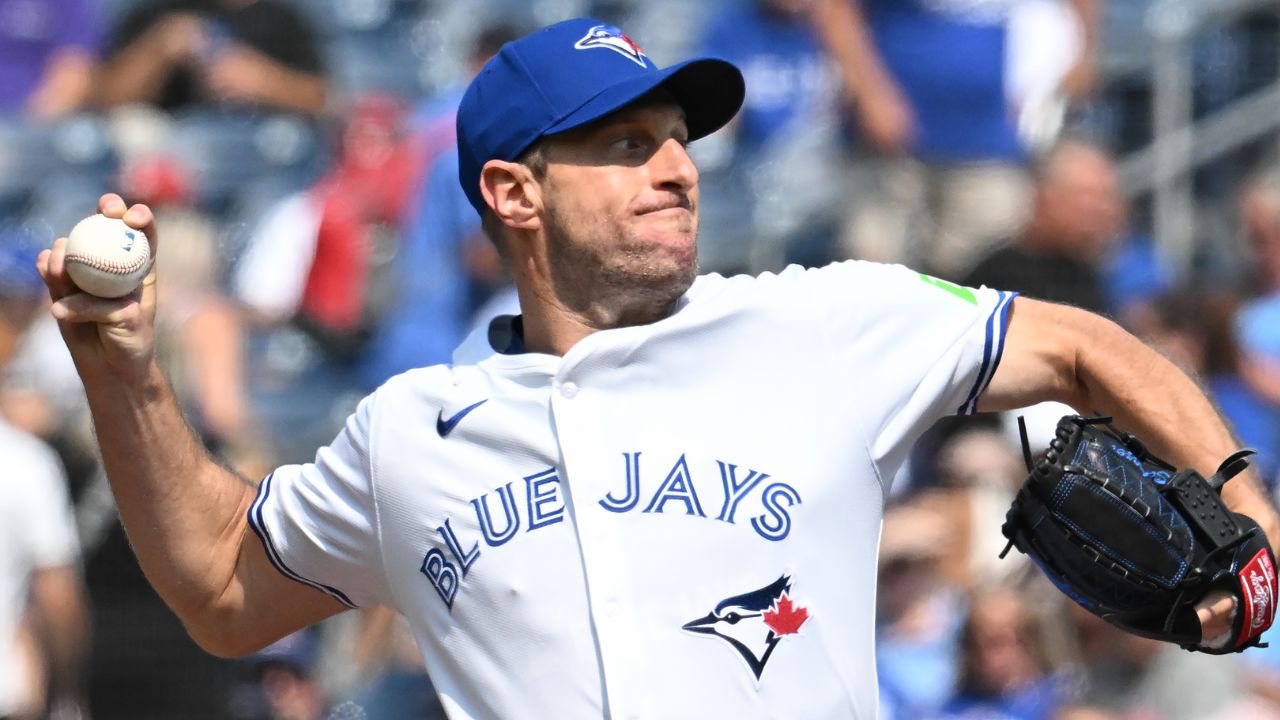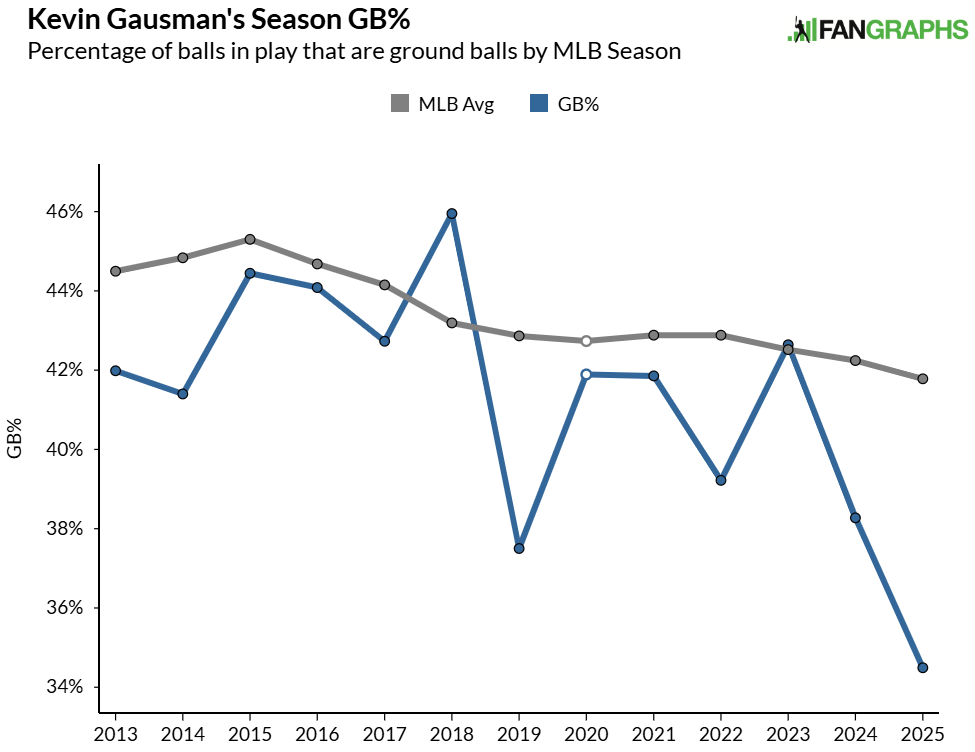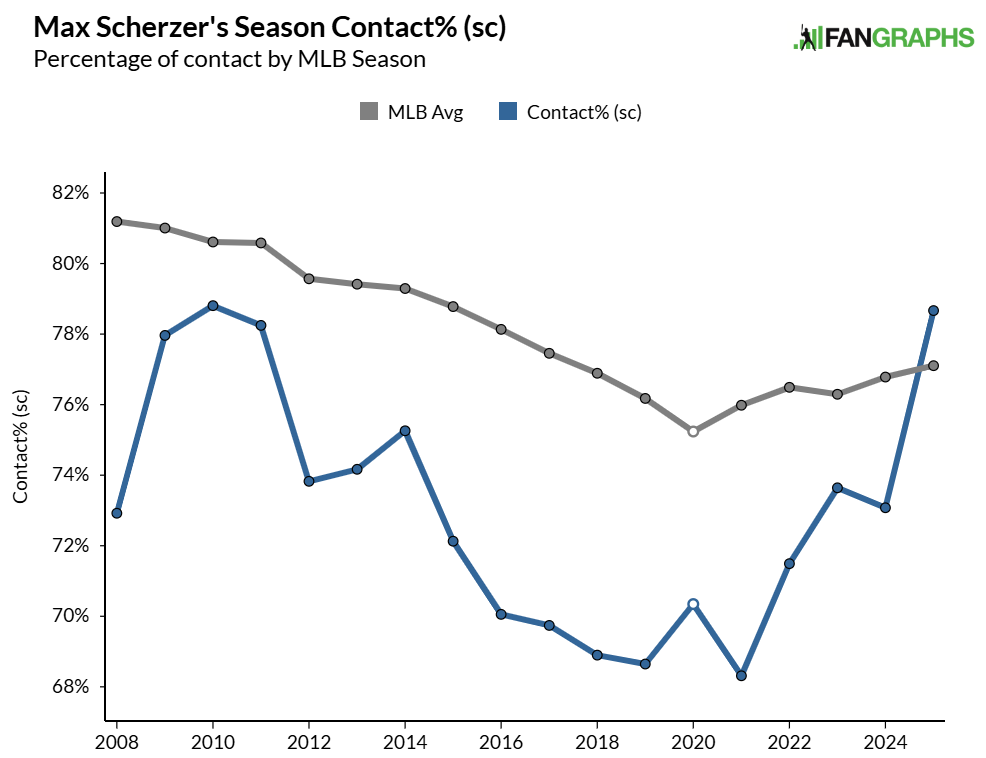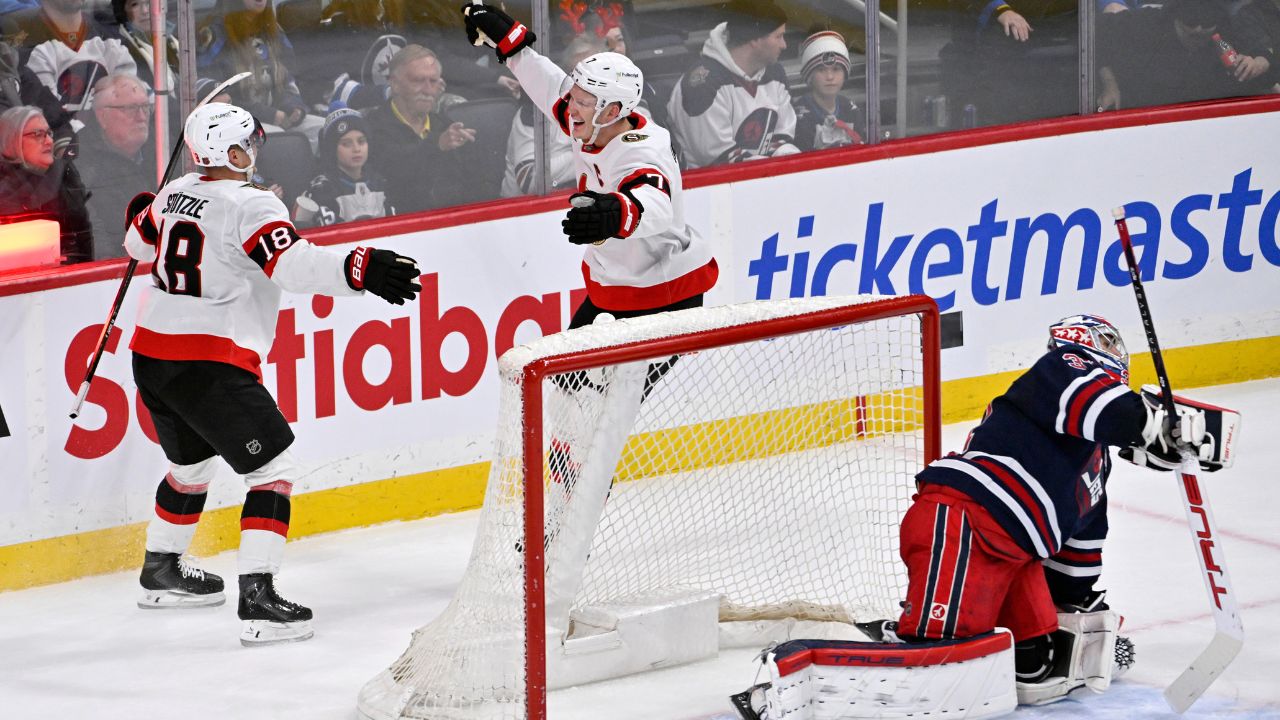
As the Toronto Blue Jays rest following the 128th game of their 2025 season, two things seem clear about the club.
• At 74-54, the Blue Jays have the second-best record in the American League, sit atop the AL East by four games, and possess a 99.5-per-cent chance of making the playoffs, according to FanGraphs.
• There are some pretty significant questions looming over Toronto’s ability to compete in a post-season setting.
The second statement is more subjective than the first, but it rings true for a club that wasn’t expected to be in this position before the season — and had a modest run differential until its record-breaking trip to Coors Field in early August. It may be unfair to throw Toronto’s recent playoff history into the mix as well, but it’s likely to become a talking point at some point in early October.
Acknowledging the uncertainty surrounding the Blue Jays doesn’t need to be an exercise in alarmism. There isn’t a dominant powerhouse in the majors that doesn’t face tough questions right now. The Los Angeles Dodgers are a tier above the Blue Jays on paper, but have a worse record. The Milwaukee Brewers have five more wins to their name, but are a similar group of surprising overachievers.
Outside of those two, no one has won three more games than Toronto or projects to beat their rest-of-season win total by more than two. The Blue Jays fit right in among MLB’s best teams in a season where truly great squads are in short supply.
There’s no doubt this is a good team, but that doesn’t mean it’s a group that doesn’t inspire some valid questions.
Who, if anyone, can provide top-of-the-rotation quality innings?
The Blue Jays took a chance on Shane Bieber at the deadline largely because of this concern.
For most of the season, Toronto’s rotation has delivered competent innings, but looked like it might struggle head-to-head against the groups it would see in the playoffs.
Consistency up and down the group since Bowden Francis hit the IL and Eric Lauer stepped up has helped the team navigate the rigours of the regular season, but in a short series, top-end talent means more than depth.
Bieber is a former Cy Young winner and ace that the team acquired to be a playoff needle mover. He also hasn’t pitched in the majors since early 2024, when he made two starts before requiring Tommy John surgery. The season before that, he carried a 3.80 ERA with a 4.83 xERA, producing 2.1 fWAR — the 62nd-best total among MLB starters.
The 30-year-old hasn’t been a top-end guy since 2022, when he finished seventh in Cy Young voting, four places behind Alek Manoah. In triple-A this season, his average fastball velocity (92.8 m.p.h.) is the best it’s been since 2020, which is an encouraging sign, but the range of outcomes for him remains massive.
Outside of Bieber, a quick perusal of the Blue Jays’ rotation’s results since the all-star break reveals those likely to be called upon for playoff starts.
|
Pitcher |
IP |
ERA |
fWAR |
|
Kevin Gausman |
38 |
2.61 |
0.8 |
|
Eric Lauer |
33 |
2.73 |
0.6 |
|
Max Scherzer |
37 |
2.92 |
0.5 |
|
Chris Bassitt |
37.1 |
4.34 |
0.1 |
|
Jose Berrios |
31 |
4.94 |
0.0 |
Let’s put aside Lauer for a moment, considering he’s headed to the bullpen for the club’s upcoming series in Miami. A playoff start isn’t out of the question for him, but he’s fighting an uphill battle due to his utility in relief and the cache of the other starters, both internally and in the game.
Unless something significant changes, the top candidates to join a playoff rotation alongside Bieber are Kevin Gausman and Max Scherzer. Beyond that, there are several viable options, including Lauer, but the worry we’re talking about here is the top of the rotation, not the bottom.
Gausman is coming off a strong string of starts, but there are some warning signs with him. For the second straight season, his strikeout rate is hovering around MLB average, and allowing more balls in play is dangerous for a guy who’s never suppressed hard contact too well.
His groundball rate has also plummeted…
… leading to the first year his HR/9 hasn’t been significantly better than league average in a long time:
While Gausman has limited walks and induced more weak fly balls than usual, the result is that he ranks 27th among MLB starters in fWAR with a 3.77 ERA that is exactly matched by his peripherals (3.77 xERA, 3.78 FIP).
The right-hander may enter the playoffs on a hot streak, but he’s closer to the middle-of-the-rotation stalwart he was last year than the force he was during the 2022 and 2023 seasons.
Scherzer has two World Series rings and 143 playoff innings to his name — and he’s seemingly put his early-season thumb issues behind him. His velocity has bounced back from a truncated 2024, and he appears to be peaking at the right time.
He also has warts that go beyond his age (41) and the injury risk he presents.
While his velocity is relatively solid, his stuff is understandably diminished. For the first time in his storied career, Scherzer is allowing more contact than the average pitcher.
His strikeout rate (8.40 K/9) remains respectable, but it could see a decline in the weeks to come unless he overperforms in two-strike counts. It has dropped a bit recently, with Scherzer managing just 17 strikeouts in his last 25 innings pitched.
The balls in play against Scherzer aren’t all dangerous, but among the 178 pitchers who’ve logged 60-plus innings this year, his groundball rate (25.7 per cent) is the lowest, and his HR/9 (1.65) ranks 157th.
A lack of both strikeouts and groundouts can be tough to navigate. Throughout his career, the future Hall of Famer’s success has come more from excellent strikeout-to-walk ratios than contact management. Since he debuted in 2008, there have been 14 pitchers who’ve accumulated 40 or more fWAR, and Scherzer is the only one with a HR/9 above 1.00.
-

-
Watch Blue Jays vs. Marlins on Sportsnet
The Toronto Blue Jays continue interleague play with a weekend series against the Miami Marlins. Watch Friday’s game on Sportsnet or Sportsnet+ starting at 7:10 p.m. ET / 4:10 p.m. PT.
Giving up more home runs than other elite pitchers hasn’t been much of a concern when he’s been racking up K after K. If he can’t miss bats at an impressive rate any longer, it looks like more of an issue.
It would shock no one if Scherzer spun a post-season gem, even at his age and stage, but it would be unfair to expect or count on one based on what he’s shown in 2025 — even if the 3.60 ERA he’s carrying is arguably better than expected.
When October comes around, the Blue Jays will have starters with big names and impressive resumes to throw at their opposition. That doesn’t mean there won’t be legitimate skepticism about how Toronto’s rotation matches up against the best the American League has to offer.
What is the Blue Jays’ power ceiling?
With the Blue Jays ranking third in the majors in wRC+ (113) and seventh in run-scoring (4.88 R/G), this team’s offence doesn’t deserve much criticism.
At the same time, it’s notable that Toronto hasn’t shown the same level of home-run power as some of its rivals. The Blue Jays enter Thursday tied for 12th in the majors in round-trippers.
That’s somewhat concerning for the team, considering the relationship between home-run hitting and playoff success. During the Kansas City Royals’ heyday in the mid-2010s, it was theorized that high-contact teams fare best in a playoff environment. More recently, the conventional wisdom has shifted towards the idea that rallies are difficult to mount against elite pitchers and quick-strike offence is more likely to be more effective in October.
Ideas around what it takes in the playoffs will continue to evolve. Still, assuming the Blue Jays reach the post-season, there’s no doubt the team’s ability to hit the ball over the wall will factor into their success, or lack thereof.
The good news for Toronto is that the team has more thump than its season-long totals suggest. Much of its power-hitting mediocrity is the result of an awful start the club has left behind. In April, only the Royals hit fewer bombs, but since the beginning of May, just six teams have managed more. Since the all-star break, only two clubs have out-homered Toronto.
That’s not the only reason to believe the Blue Jays’ season-long home-run total undersells their power potential.
Daulton Varsho’s return is significant as the outfielder has hit a homer in 8.3 per cent of his at-bats. Cal Raleigh is the only MLB hitter with a higher percentage this season. Varsho has played less than a third of Toronto’s games so far and should be a consistent home-run threat down the stretch, even if he slows down a bit.
Addison Barger’s emergence is notable, too, as he didn’t become a regular part of the Blue Jays lineup until May and should be a staple, at least against right-handed starters, from here on out. His current home-run output would translate to approximately a 30-homer pace over a full season.
If Anthony Santander is able to make it back, it also goes without saying that a hitter who hit 44 home runs last season — and 105 from 2022 to 2024 — might help in that department.
Presuming Vladimir Guerrero Jr. makes a relatively prompt return to the lineup, there’s a good chance his power down the stretch exceeds his overall 2025 numbers. The 26-year-old got off to a slow start, but has found his home-run swing.
No individual player on the Blue Jays is heading for a gaudy home-run total in 2025, but when complete, this team has more power than it’s given credit for.
Can the Blue Jays count on elite-level defence?
On the surface, this could seem like an odd question.
If you pick out the defensive metric of your choice and sort by team, the Blue Jays will be near the top. This is a team that employs Varsho, Andrés Giménez, Alejandro Kirk, and Myles Straw, after all.
At the same time, the team’s more recent results are unimpressive. Since the beginning of July, the Blue Jays rank 26th in Statcast’s Fielding Run Value. Of the 492 players who’ve spent at least 10 innings in the field in that time, Barger (-5) and Bo Bichette (-6) rank 488th and 489th, respectively. Those two are joined by Ernie Clement (-3), Guerrero (-2), and Davis Schneider (-1) in the negative column.
Small-sample defensive metrics aren’t always the most reliable — Clement’s number stands out as possible statistical noise, for instance — but there are structural reasons to wonder if the Blue Jays can live up to their defensive reputation.
That starts with Bichette and Barger, but it goes deeper than that. If the team wants to use Ty France against left-handed pitchers, that is likely to mean more time in the outfield for George Springer, who has struggled defensively in his age-35 season when called upon. If Santander is reintegrated into the lineup at some point, that means more outfield work for Springer, or Santander himself, who is a plodder in whichever corner he plays.
Toronto has a stellar defensive foundation thanks to Varsho, Kirk, and Giménez, but there isn’t another spot where the Blue Jays project to get consistently above-average work outside of Clement at third base. The utility man could see his time against right-handing pitching limited at some point, which would further weaken the Blue Jays defensively.
Although the bottom is unlikely to fall out for this team in the field, it’s possible it won’t live up to its defensive reputation in October.










